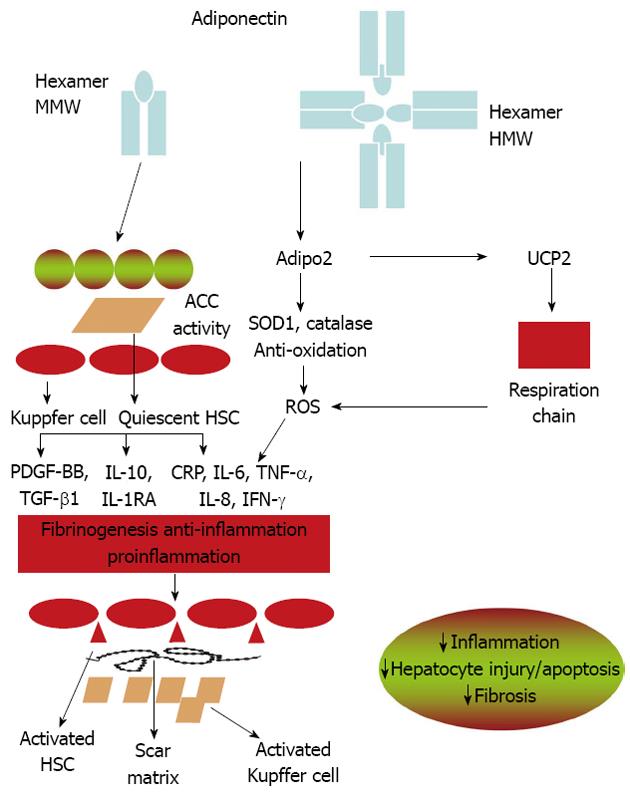Copyright
©2013 Baishideng Publishing Group Co.
World J Gastroenterol. Feb 14, 2013; 19(6): 802-812
Published online Feb 14, 2013. doi: 10.3748/wjg.v19.i6.802
Published online Feb 14, 2013. doi: 10.3748/wjg.v19.i6.802
Figure 1 Summary of multiple signaling pathways that mediate the anti-steatotic effects of adiponectin.
HMW: High molecular weight; AdipoR: Adiponectin receptor; APPL1: Adaptor protein, phosphotyrosine interaction, PH domain and leucine zipper containing 1; AMPK: AMP-activated kinase; ACC: Acetyl Coenzyme A carboxylase; CPT1: Carnitine palmitoyl transferase 1; SREBP1: Sterol regulatory element-binding protein 1; FAS: Fatty acid synthase; GPAT: Glycerol-3-phosphate acyltransferase; ACOX: Acyl-CoA oxidase; LCAS: Long chain acyl-CoA synthetase; FATP: Fatty acid transport protein; PPARα: Peroxisome proliferator-activated receptor α; TG: Triacylglyceride; FA: Fatty acid.
Figure 2 Summary of multiple pathways underlying the protective effects of adiponectin against liver injury.
MMW: Middle molecular weight; HMW: High molecular weight; AdipoR: Adiponectin receptor; UCP: Uncoupling protein; SOD1: Superoxide dismutase 1; ROS: Reactive oxygen species; PDGF-BB: Platelet-derived growth factor BB; TGF-β1: Transforming growth factor-β1; CRP: C-reactive protein; IL: Interleukin; IL-1RA: Interleukin-1-receptor antagonist; TNF-α: Tumor necrosis factor-α; HSC: Hepatic stellate cells; IFN-γ: Interferon-γ.
- Citation: Finelli C, Tarantino G. What is the role of adiponectin in obesity related non-alcoholic fatty liver disease? World J Gastroenterol 2013; 19(6): 802-812
- URL: https://www.wjgnet.com/1007-9327/full/v19/i6/802.htm
- DOI: https://dx.doi.org/10.3748/wjg.v19.i6.802














